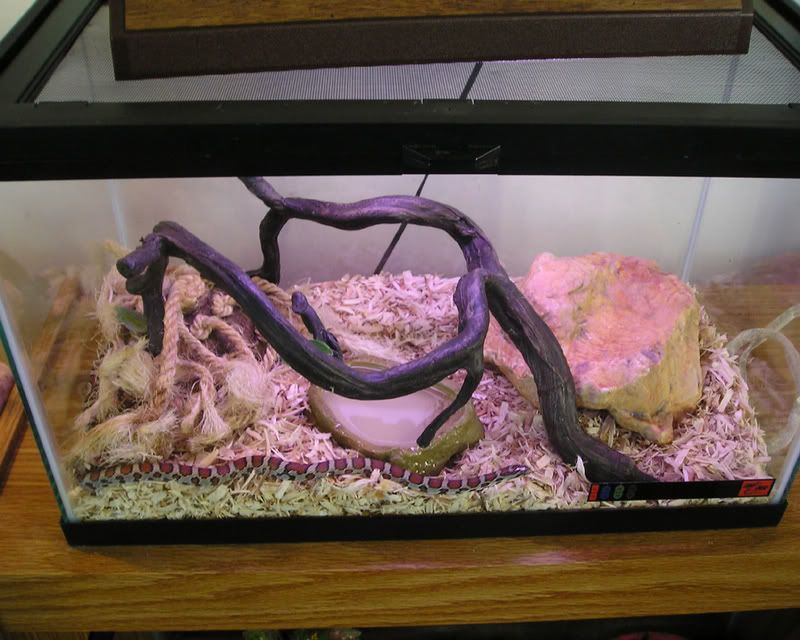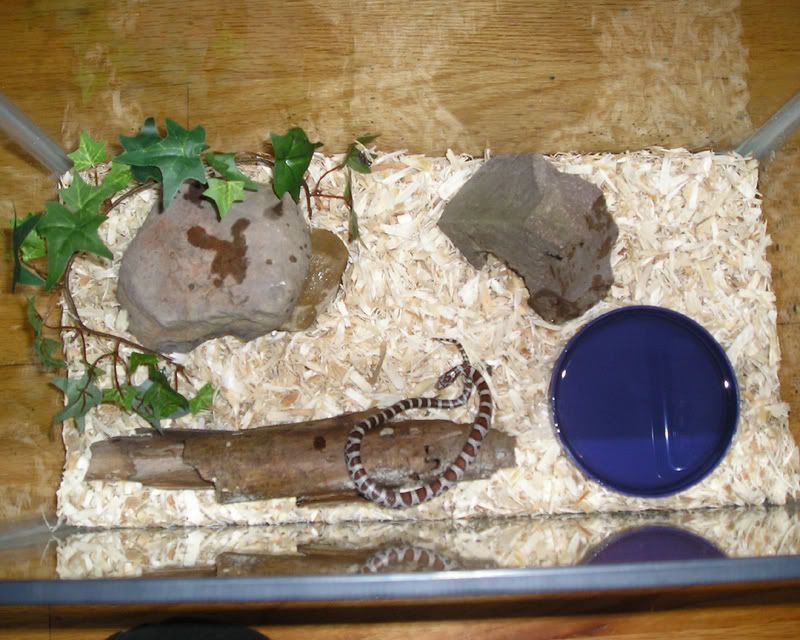- Joined
- Nov 19, 2006
- Messages
- 422
I recently adopted a new addition to the fam, a black milksnake. This is my second snake, the first being a ball python, but I haven't had a snake in about ten years. I've read about a half dozen caresheets, on milksnakes and cornsnakes, but wanted the shared experience of owners/keepers.
My setup:
24" X 12" X 12"
Coconut fiber bedding, with a twisted root (mori?) and water dish (with steps).
Cobra heat mat is under 1/3 of the tank, and the snake seems to regulate fairly well, as find him in various places around the tank, not just on the cold side.
I am going to construct another hide for him this weekend, out of some sample stone from a stone company near here. Father-in-Law has the camera right now, but will post pics this weekend.
Criticism, inquiry, advice, and pics posted of your own milksnakes are welcome.
My setup:
24" X 12" X 12"
Coconut fiber bedding, with a twisted root (mori?) and water dish (with steps).
Cobra heat mat is under 1/3 of the tank, and the snake seems to regulate fairly well, as find him in various places around the tank, not just on the cold side.
I am going to construct another hide for him this weekend, out of some sample stone from a stone company near here. Father-in-Law has the camera right now, but will post pics this weekend.
Criticism, inquiry, advice, and pics posted of your own milksnakes are welcome.










